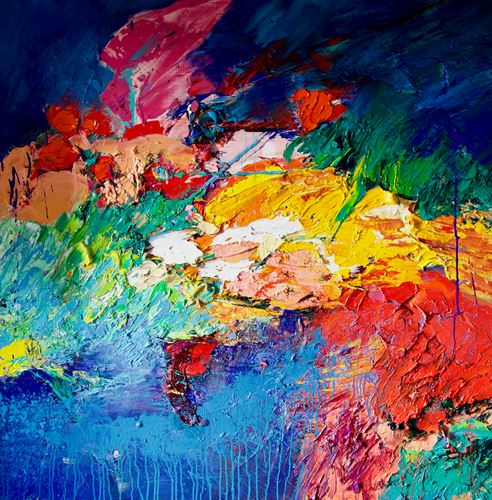Gerard Stricher
Exhibited by
About
Born into a family of artists in Sarrebourg, Moselle, in 1948, Gérard Stricher began painting in the 1970s, when he was still an engineering student in Paris. He moved in art circles and found buyers and encouragement for his work, but his interest in the industrial field shifted his path to an international career in management. He became a "world citizen," absorbing landscapes and cultures from all corners of the globe, an influence that would later be reflected in his work.
He led a hugely successful executive career until he eventually moved back to painting in 2003. Stricher is adamant that his career and its world travel opportunities have shaped his art uniquely, allowing him to view many different cultures and artistic trends beyond that he was raised with, which greatly widened his scope of style.
In 2004 he bought an old mill in the Vexin region of northwestern France, where he set up his studio and began working intensely: this was a new adventure centered totally on his painting. Influenced by the nature surrounding
him, Stricher’s work focuses on abstract explorations of color. Conscious of the land surrounding his workspace, Stricher describes le Vexin as “offering a unique quality of light and diversity of landscapes.”
Though many would describe his work as abstraction, Gérard Stricher himself believes there is no such thing. Each painting created is a work of a living being who is present in nature; the work reflected onto the canvas is therefore influenced by the artist’s own unconscious impulses. Much of Stricher’s work can be rooted to his prolonged intrest in the School of Cobra Painters: Appel, Lindström, Jorn, etc. Pushing his research in this direction has led him to
discover the true power of pure color and material. However, little planning is done in preparation for his paintings, they rely on his spontanious emotions and instinctual color parings.
“My gestures in the act of painting do not follow the inputs of the brain, often my hand makes gestures that rationality does not command, it is the great mystery, the journey into the unknown...”
He led a hugely successful executive career until he eventually moved back to painting in 2003. Stricher is adamant that his career and its world travel opportunities have shaped his art uniquely, allowing him to view many different cultures and artistic trends beyond that he was raised with, which greatly widened his scope of style.
In 2004 he bought an old mill in the Vexin region of northwestern France, where he set up his studio and began working intensely: this was a new adventure centered totally on his painting. Influenced by the nature surrounding
him, Stricher’s work focuses on abstract explorations of color. Conscious of the land surrounding his workspace, Stricher describes le Vexin as “offering a unique quality of light and diversity of landscapes.”
Though many would describe his work as abstraction, Gérard Stricher himself believes there is no such thing. Each painting created is a work of a living being who is present in nature; the work reflected onto the canvas is therefore influenced by the artist’s own unconscious impulses. Much of Stricher’s work can be rooted to his prolonged intrest in the School of Cobra Painters: Appel, Lindström, Jorn, etc. Pushing his research in this direction has led him to
discover the true power of pure color and material. However, little planning is done in preparation for his paintings, they rely on his spontanious emotions and instinctual color parings.
“My gestures in the act of painting do not follow the inputs of the brain, often my hand makes gestures that rationality does not command, it is the great mystery, the journey into the unknown...”
Work Selection

La Mer
